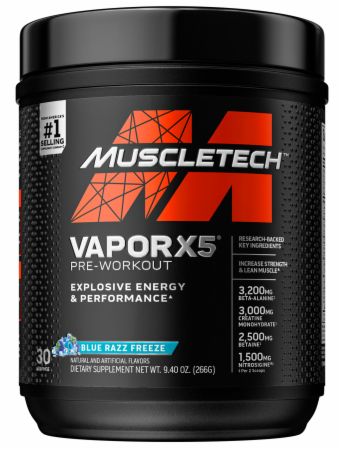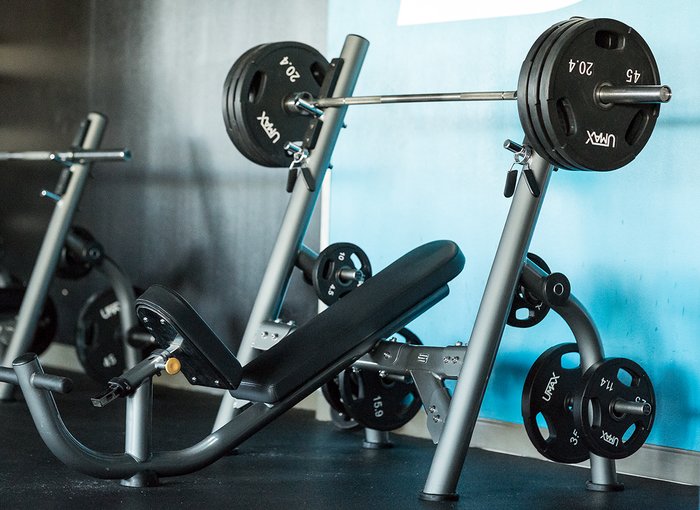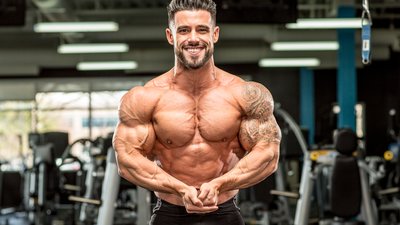Few gym queries are as well-known as "How much ya bench?" It's as if all of fitness and bodybuilding can be distilled in this one metric.
To be clear: No, it can't. But just as obviously, no one wants to look like weak sauce under a loaded bar. So how to do you build power without going full-blown powerlifter and potentially sacrificing aesthetics?
IFBB pro bodybuilder and MuscleTech-sponsored athlete Santi Aragon shares his foolproof tips for adding more weight to the bar, while maintaining competition-caliber size and symmetry.
Take A Page Out of the Powerlifting Technique Book
There's a time to lift like a bodybuilder, focusing squarely on the mind-muscle connection, time under tension, and lifting to or near failure. But there's also a time to lift like a powerlifter, with maximum full-body tension, power positioning, and nailing every single rep. If you want to move heavy weight, the second approach simply must be somewhere in your arsenal.
Aragon is no powerlifter, but when he wants to add more to his bench, he learns from them—mainly how they position their bodies to lift the bar.
"If you watch any powerlifter, they have their shoulders planted on the bench, but their back is arching," explains Aragon.
Their feet are likewise on the floor, planted directly under their body to increase the base of power. All of a sudden, this isn't just chest and tris—every muscle is in on the game.
Pushing off the floor and arching under the bar stabilizes the lift while shortening the range of motion of the bar, helping you press more weight. To further decrease range of motion and make use of the powerful chest muscles, use a wider grip.
"For me, since I'm shorter, I'm going to place my arms as wide as possible so the distance I push the bar through is as short a range of motion as possible," says Aragon.
Say what? A bodybuilder who doesn't preach maximum range of motion? That may sound like sacrilege, but Aragon knows increased strength and power are beneficial to aesthetics when done in just the right dose.
"Since I'm a bodybuilder, I rarely use form just for power," he explains. "But I do incorporate powerlifting movements into my program, and it's made a night-and-day difference in my muscle density."

Think Max Workload, Not Just Max Reps
All this talk about powerlifting may get you salivating to go to the gym and grind out a heavy max-effort rep, but don't go buy a singlet just yet! Even powerlifters rarely hit heavy singles or doubles. The rest of us may never need to!
Sure, the "How much ya" question naturally leads you to respond with the highest number possible—your one rep max. But if strength and size are your goals, you need to train with a broader definition of strength.
Let's say that the calculator says your one-rep max on bench press is right around 300 pounds. Even with a perfect warm-up and ramp-up, the most you could probably handle that weight for would be 6-8 grueling singles—and that's with plenty of rest between, a spotter at the ready, and your arms ready to fall off by the end. Even with all that, you'd only have lifted 2,400 pounds by the end of an insanely tough workout.

Now let's say you drop the weight down to about 85 percent of your one rep max—about 250 pounds. It's the difference of one 25-pound plate per side, but you could almost definitely handle it for 4 heavy but clean sets of 3-5 reps.
Even if you choose the low end of that range, your total training volume would be 3,000 pounds—far higher than the max workout. You've traded a potentially dangerous routine for a more feasible—but still heavy—strength workout and ended up with greater training volume. Sounds like a win-win to me.
Want to add even more volume? After you hit a few heavy sets, find other ways to keep upping that total workload. Then be sure to check out our 10 best chest exercises for building muscle.
"I recommend building up to your heavy set as you would normally," suggests Aragon, "then repeat your heavy set for your final, but include a single dropset or a rest-pause set."
The lesson for you: Even if you go heavy, don't do it at the expense of volume. You'll get more muscular results—and probably more strength results—if you stick to manageable weights and move them more times.
Tinker with Your Splits
There's a natural logic to the classic bodybuilder splits: Work the muscle groups that work together. Chest and triceps are both active when you press, and back and biceps engage when you pull. Therefore, it makes sense to have a chest-and-triceps day and a back-and-biceps day, murder both muscle groups, then give them a long time to recover.
But if you've been following that approach for as long as you can remember, changing it up may be just the thing to boost your results.

"I've been doing antagonist splits for certain muscle groups," says Aragon. "I find doing biceps after my chest workout helps move blood around even more and stimulate additional muscle groups."
Antagonist splits are also a great way to add muscle-specific work without adding an additional day of dedicated lifting. If you work chest and biceps on Monday, you'll have to work triceps later in the week, which means those pushing muscles won't have to wait an entire week to get hammered again next Monday. Plus, you get to start the week doing curls. Nothing wrong with that!
If you're still looking for ideas to change up your split routine and increase your bench, check out the article "The New Science of Size and Strength." It contains two complete programs that you can run in phases to maximize both of these crucial attributes!

